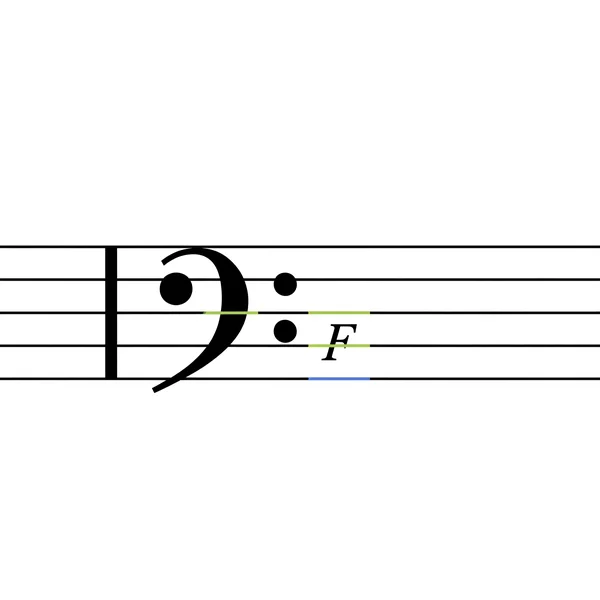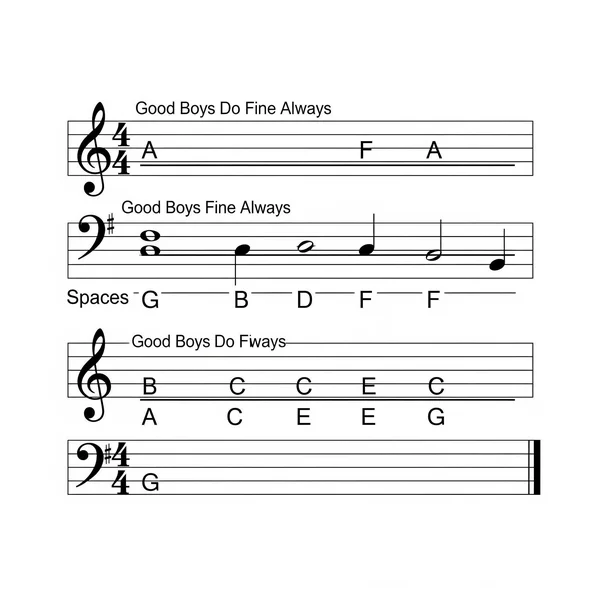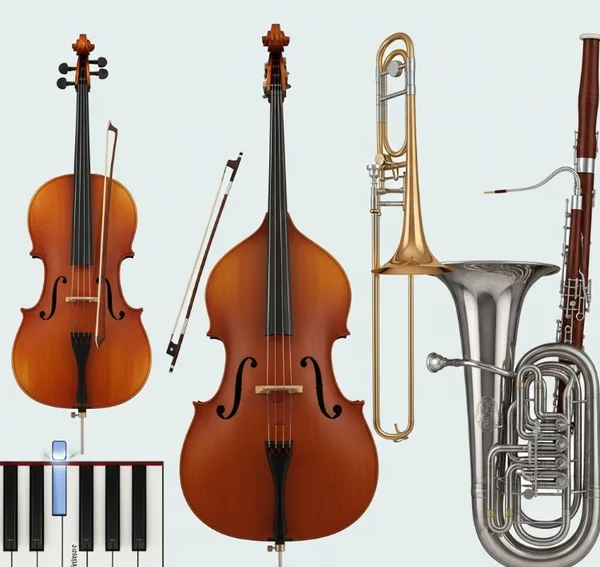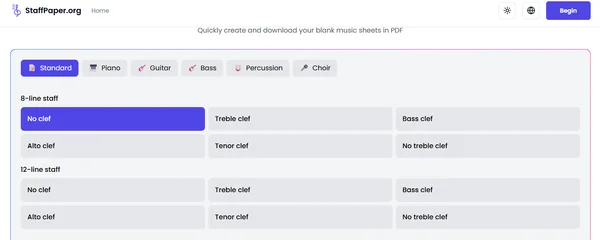Master Bass Clef: Free Printable Bass Staff Paper
Venturing into the world of music often means encountering different clefs, and the bass clef is fundamental for many instruments and voices. If you're looking to learn bass clef or need resources for your practice, understanding bass clef staff paper is essential. What instruments use F clef? This guide will help you master the bass clef, explain its uses, and show you where to find high-quality printable bass staff sheets. To get started right away, you can download your free bass clef sheets.
Why Understanding the Bass Clef is Crucial for Musicians
Why is it important to learn bass clef? The bass clef, also known as the F clef, is primarily used to notate pitches below middle C. For musicians playing instruments like the cello, double bass, bassoon, trombone, tuba, or for pianists reading their left-hand parts, and for baritone or bass singers, mastering the bass clef is non-negotiable. It allows for a clear representation of low notes staff without excessive ledger lines that would be necessary if only the treble clef were used. Having access to good F clef paper for practice is a great first step.
What is the Bass Clef (F Clef)? Demystifying the Symbol for Low Notes
Why is it called F clef? The bass clef symbol itself provides the answer.
The Bass Clef Symbol Explained
The distinctive bass clef symbol looks a bit like a stylized "F" with two dots. The two dots are placed above and below the fourth line from the bottom of the staff. This fourth line is designated as the pitch F below middle C. Therefore, any note placed on this line when the bass clef is present is an F. This makes it much easier to identify other bass clef notes.

Lines and Spaces on the Bass Staff
Once you know the F line, you can figure out the other notes on the bass clef staff paper:
- Lines (from bottom to top): G, B, D, F, A (Often remembered with "Good Boys Do Fine Always" or "Great Big Dogs Fight Animals")
- Spaces (from bottom to top): A, C, E, G (Often remembered with "All Cows Eat Grass" or "All Cars Eat Gas")
Understanding this is fundamental to how to read bass clef.
Why is it Called the F Clef?
As mentioned, the symbol curls around and the two dots flank the line that represents the F below middle C. This direct indication of the F pitch is why it's historically known as the F clef. Using F clef paper means you are using paper specifically formatted for this clef.
How to Read Bass Clef Notes: A Beginner's Guide
What is the easiest way to learn bass clef notes? Consistent practice with good resources is key.
Memorization Techniques (Acronyms/Sayings)
Using mnemonics like "Good Boys Do Fine Always" for the lines and "All Cows Eat Grass" for the spaces can significantly speed up your ability to identify bass clef notes on your printable bass staff.

Identifying Key Landmark Notes
Besides the F on the fourth line, other landmark notes on the bass clef staff paper include Middle C (which sits on the first ledger line above the staff) and the G on the bottom line. Using these as reference points can help you quickly find other notes.
Practicing with Simple Melodies
Once you have a basic grasp, start practicing with simple melodies written in bass clef. You can find many exercises online, or even try writing out simple tunes yourself on some blank music sheets designed for bass clef. This is excellent bass clef practice.
Tips for Piano Players (Left Hand)
For pianists, the bass clef typically represents the notes played by the left hand. Regular practice reading piano left hand notes on bass clef staff paper is crucial for coordinating both hands and understanding harmonies.
Which Instruments Use the Bass Clef? From Cello to Tuba
Many instruments rely on the bass clef for their primary notation. Knowing what instruments use F clef can be helpful.
Common String Instruments
Instruments like the cello, double bass, and bass guitar predominantly use the bass clef. Their range falls comfortably within what the low notes staff can represent. You'll often find specific cello staff paper is simply bass clef paper.
Brass Instruments
Many lower-pitched brass instruments, including the trombone, tuba, euphonium, and sometimes the French horn (in its lower register), use the bass clef.
Keyboard Instruments (Left Hand)
As mentioned, the left hand of piano and organ music is almost always written in bass clef on staff paper pdf layouts designed for these instruments.

Other Instruments and Voices
The bassoon and contrabassoon use bass clef. In vocal music, baritone and bass voices are notated in bass clef.
Download Your Free Printable Bass Staff Paper from StaffPaper.org
To effectively learn bass clef and practice your reading and writing, you need access to good quality bass clef staff paper. We offer a variety of options.
Benefits of Dedicated Bass Clef Paper
While you could draw a bass clef on any staff paper, using dedicated printable bass staff ensures the clef is correctly proportioned and placed, aiding in accurate practice. It saves you the time of drawing the clef repeatedly.
Available Layouts
When you download bass clef paper here, you'll find different layouts, such as varying numbers of staves per page, to suit your needs, whether it's for short exercises or longer compositions. We aim to provide versatile free staff paper.

Printing Tips for Bass Staff Paper
For the best results when printing your bass clef staff paper pdf, ensure your printer is set to "Actual Size" or "100% Scale" and use a good quality print setting. (You can find more detailed printing tips in our dedicated printing guide!)
Tips for Writing Music on Bass Clef Staff Paper
Once you're comfortable reading, you might want to start writing on your F clef paper.
Proper Clef Placement
Always draw the bass clef symbol accurately at the beginning of each staff. The curl should start on the F line, and the two dots should neatly flank this line.
Using Ledger Lines in Bass Clef
How do ledger lines work in bass clef? Just like in treble clef, ledger lines extend the staff upwards or downwards to notate pitches outside the five main lines. Consistent spacing is key for readability on your music staff paper.
Clarity in Bass Clef Writing
Ensure your notes, rests, and other musical symbols are written clearly and legibly. This is important whether you're writing for yourself or for others to read from your bass clef staff paper.
Confidently Navigate the World of Low Notes
Mastering the bass clef opens up a vast repertoire of music and is an essential skill for many musicians. With consistent bass clef practice, using helpful memorization techniques, and utilizing quality resources like our free printable bass staff sheets, you can confidently read, write, and understand music written for the lower register.
We encourage you to explore our staff paper collection for all your musical notation needs.
Your Bass Clef Questions Answered
-
Is bass clef harder to learn than treble clef?
Neither clef is inherently "harder"; it often depends on which one you learn first or use more frequently. They simply represent different ranges of notes. With dedicated practice on bass clef staff paper, it becomes just as familiar as the treble clef.
-
What is the easiest way to learn bass clef notes?
Combining mnemonic devices (like "Good Boys Do Fine Always"), identifying landmark notes, and regular practice with simple exercises on printable bass staff or a bass clef worksheet is often the most effective approach.
-
Can I use regular staff paper for bass clef?
Yes, you can draw a bass clef on any blank staff paper. However, using pre-printed bass clef staff paper like the kind you can get bass clef templates here saves time and ensures the clef is always correctly placed for optimal learning and readability.
-
How do ledger lines work in bass clef?
Ledger lines in bass clef work the same way as in treble clef. They are short lines added above or below the staff to extend its range, allowing you to notate pitches higher than the A on the top line or lower than the G on the bottom line of the F clef paper.
-
Where can I find bass clef practice exercises?
Many music theory websites, apps, and textbooks offer bass clef practice exercises. You can also create your own using our download bass clef paper and transcribing simple melodies or writing out scales.